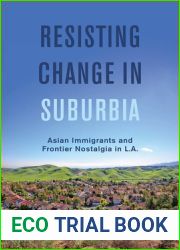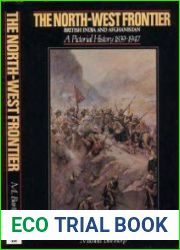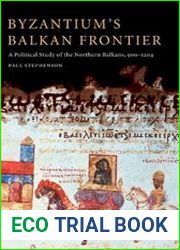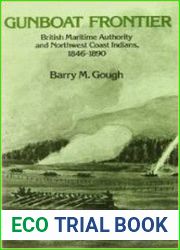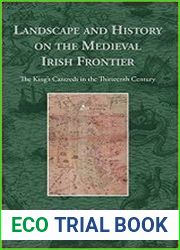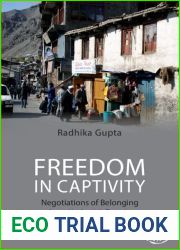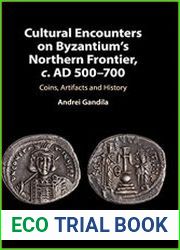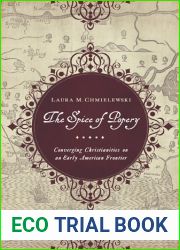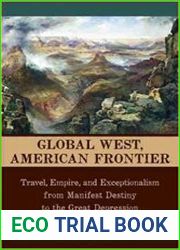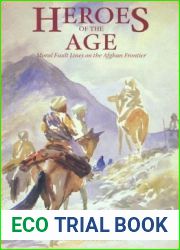
BOOKS - Daily Life on the Istrian Frontier: Living on a Borderland in the Sixteenth C...

Daily Life on the Istrian Frontier: Living on a Borderland in the Sixteenth Century (Studies in the History of Daily Life 800-1600) (Studies in the History of Daily Life 800-1600, 7)
Author: Robert Kurelic
Year: January 15, 2016
Format: PDF
File size: PDF 1.8 MB
Language: English

Year: January 15, 2016
Format: PDF
File size: PDF 1.8 MB
Language: English

Daily Life on the Istrian Frontier: Living on a Borderland in the Sixteenth Century In the sixteenth century, the Istrian peninsula, located at the head of the Adriatic Sea, was a land of divisions. Today, it is shared between the modern-day countries of Italy, Slovenia, and Croatia, but during that time, it was divided between the urban coastline dominated by the Republic of Venice and the rural inland under the sway of the Austrian Habsburgs. The subject populations of the peninsula, predominantly Slavic Croatians and Slovenians, found themselves split between these rival powers despite their shared cultural background. This led to frequent and violent clashes over boundary markers, pastures, and forests, which added to the ravages of war, famine, and plague, resulting in severe regional depopulation. The book explores the arrival and subsequent social impact of a new wave of immigrants to Istria, set against the backdrop of these sixteenth-century tensions. These were the Morlaks, Slavic speakers who had fled north from the Balkan hinterlands in the face of the Ottoman threat. They were invited into Istria by both Venetians and Habsburgs as a way of replenishing the dwindling population. However, these new arrivals lived an opportunistic lifestyle that often bordered on banditry, creating inevitable tensions with Istria's existing population. Despite this, some were able to integrate fully into their new homeland.
Повседневная жизнь на Истрийской границе: Жизнь на пограничье в шестнадцатом веке В шестнадцатом веке полуостров Истрия, расположенный в истоках Адриатического моря, был страной разделения. Сегодня он разделён между современными странами Италией, Словенией и Хорватией, но в то время он был разделён между городским побережьем, в котором доминировала Венецианская республика, и сельской местностью внутри страны под влиянием австрийских Габсбургов. Подданное население полуострова, преимущественно славянские хорваты и словенцы, оказались расколотыми между этими соперничающими державами, несмотря на их общее культурное происхождение. Это привело к частым и жестоким столкновениям из-за пограничных знаков, пастбищ и лесов, что усугубило опустошение войны, голода и чумы, что привело к серьезной региональной депопуляции. Книга исследует прибытие и последующее социальное воздействие новой волны иммигрантов в Истрию, установленной на фоне этих трений XVI века. Это были морлаки, носители славянского языка, бежавшие на север из балканских глубинок перед лицом османской угрозы. Они были приглашены в Истрию как венецианцами, так и Габсбургами как способ пополнения сокращающегося населения. Однако эти вновь прибывшие жили оппортунистическим образом жизни, который часто граничил с бандитизмом, создавая неизбежную напряженность с существующим населением Истрии. Несмотря на это, некоторые смогли полностью интегрироваться в свою новую родину.
Vie quotidienne à la frontière d'Istrie : Vivre à la frontière au XVIe siècle Au XVIe siècle, la péninsule d'Istrie, située aux origines de la mer Adriatique, était un pays de division. Aujourd'hui, il est divisé entre les pays modernes de l'Italie, de la Slovénie et de la Croatie, mais à l'époque, il était divisé entre la côte urbaine dominée par la République de Venise et la campagne intérieure sous l'influence des Habsbourg autrichiens. La population de la péninsule, principalement les Croates slaves et les Slovènes, s'est retrouvée divisée entre ces puissances rivales, malgré leur origine culturelle commune. Cela a entraîné des affrontements fréquents et violents à cause des panneaux frontaliers, des pâturages et des forêts, ce qui a aggravé la dévastation de la guerre, de la faim et de la peste, entraînant une grave dépeuplement régional. livre explore l'arrivée et l'impact social qui s'ensuit d'une nouvelle vague d'immigrants en Istrie, établie dans le contexte de ces frictions du XVIe siècle. C'était des Morlaks, des locuteurs slaves, qui fuyaient vers le nord de l'arrière-pays des Balkans face à la menace ottomane. Ils ont été invités en Istrie par les Vénitiens et les Habsbourg comme un moyen de reconstituer la population en déclin. Cependant, ces nouveaux arrivants ont vécu un mode de vie opportuniste, qui a souvent frôlé le banditisme, créant des tensions inévitables avec la population existante de l'Istrie. Malgré cela, certains ont pu s'intégrer pleinement dans leur nouvelle patrie.
La vida cotidiana en la frontera de Istria: La vida en la frontera en el siglo XVI En el siglo XVI, la península de Istria, situada en los orígenes del mar Adriático, era un país de división. Hoy en día se divide entre los países modernos Italia, Eslovenia y Croacia, pero en ese momento se dividía entre la costa urbana, dominada por la República de Venecia, y el campo dentro del país bajo la influencia de los Habsburgo austriacos. La población súbdita de la península, predominantemente croatas eslavos y eslovenos, se encontró dividida entre estas potencias rivales, a pesar de su origen cultural común. Esto dio lugar a frecuentes y violentos enfrentamientos por señales fronterizas, pastizales y bosques, lo que agravó la devastación de la guerra, el hambre y la peste, lo que llevó a una grave despoblación regional. libro explora la llegada y posterior impacto social de la nueva ola de inmigrantes a Istria, instalada en medio de estas fricciones del siglo XVI. Se trataba de morlacos, hablantes de eslavo, que huían hacia el norte desde las profundidades balcánicas ante la amenaza otomana. Fueron invitados a Istria tanto por los venecianos como por los Habsburgo como una forma de reponer la población en declive. n embargo, estos recién llegados vivieron un estilo de vida oportunista que a menudo bordeaba el bandolerismo, creando inevitables tensiones con la población existente de Istria. A pesar de ello, algunos han podido integrarse plenamente en su nueva patria.
La vita quotidiana sul confine istriano: La vita alla frontiera nel seicento secolo La penisola istriana, situata nelle origini dell'Adriatico, era un paese di separazione. Oggi è diviso tra i paesi moderni dell'Italia, della Slovenia e della Croazia, ma all'epoca era diviso tra la costa cittadina dominata dalla Repubblica di Venezia e la zona rurale del paese sotto l'influenza degli Gabsburg austriaci. La popolazione suddita della penisola, per lo più croata slava e slovena, si è rivelata divisa tra queste potenze rivali, nonostante le loro origini culturali comuni. Ciò ha causato frequenti e violenti scontri a causa dei cartelli di confine, dei pascoli e dei boschi, che hanno aggravato la devastazione della guerra, della fame e della peste, causando una grave depopolazione regionale. Il libro indaga l'arrivo e il conseguente impatto sociale di una nuova ondata di immigrati in Istria, stabilita sullo sfondo di queste tensioni del XVI secolo. Erano morlaki, portatori di lingua slava, fuggiti verso nord dai fondali balcanici di fronte alla minaccia ottomana. Sono stati invitati in Istria sia dai veneziani che dagli Habsburg come modo per rifornire la popolazione in diminuzione. Ma questi nuovi arrivati vivevano uno stile di vita opportunistico, spesso confinato con il banditismo, creando inevitabili tensioni con la popolazione dell'Istria. Nonostante ciò, alcuni sono stati in grado di integrarsi completamente nella loro nuova patria.
Alltag an der istrischen Grenze: ben an der Grenze im 16. Jahrhundert Im 16. Jahrhundert war die Halbinsel Istrien, die an den Ursprüngen der Adria liegt, ein Land der Teilung. Heute ist es zwischen den modernen Ländern Italien, Slowenien und Kroatien aufgeteilt, aber zu dieser Zeit war es zwischen der Stadtküste, die von der Republik Venedig dominiert wurde, und der Landschaft im Landesinneren unter dem Einfluss der österreichischen Habsburger aufgeteilt. Die unterworfene Bevölkerung der Halbinsel, hauptsächlich slawische Kroaten und Slowenen, wurde trotz ihres gemeinsamen kulturellen Hintergrunds zwischen diesen rivalisierenden Mächten gespalten. Dies führte zu häufigen und gewalttätigen Zusammenstößen aufgrund von Grenzschildern, Weiden und Wäldern, die die Verwüstung von Krieg, Hunger und Pest verschärften und zu einer schweren regionalen Entvölkerung führten. Das Buch untersucht die Ankunft und die nachfolgenden sozialen Auswirkungen der neuen Welle von Einwanderern in Istrien, vor dem Hintergrund dieser Reibungen des 16. Jahrhunderts etabliert. Es waren Morlaks, slawische Muttersprachler, die angesichts der osmanischen Bedrohung aus dem Hinterland des Balkans in den Norden flohen. e wurden sowohl von den Venezianern als auch von den Habsburgern nach Istrien eingeladen, um die schrumpfende Bevölkerung wieder aufzufüllen. Diese Neuankömmlinge lebten jedoch einen opportunistischen bensstil, der oft an Banditentum grenzte und unvermeidliche Spannungen mit der bestehenden Bevölkerung Istriens verursachte. Trotzdem konnten sich einige vollständig in ihre neue Heimat integrieren.
Życie codzienne na granicy istryjskiej: Życie na granicy w XVI wieku W XVI wieku półwysep istryjski, położony na czele Morza Adriatyckiego, był krajem podziału. Współcześnie jest podzielona między współczesne kraje Włoch, Słowenii i Chorwacji, ale w tym czasie została podzielona między wybrzeże miejskie, zdominowane przez Republikę Wenecką, a wieś wewnątrz kraju pod wpływem austriackich Habsburgów. Tematyczna populacja półwyspu, głównie słowiańskich Chorwatów i Słoweńców, znalazła się podzielona między te rywalizujące potęgi pomimo wspólnego pochodzenia kulturowego. Doprowadziło to do częstych i gwałtownych starć o znaki graniczne, pastwiska i lasy, co przyczyniło się do spustoszenia wojny, głodu i dżumy, co doprowadziło do poważnego wyludnienia regionalnego. Książka bada przybycie i późniejsze społeczne skutki nowej fali imigrantów do Istrii, ustawionej na tle tych XVI-wiecznych tarć. Byli to Morlaki, słowiańscy mówcy, którzy uciekli na północ od Bałkanów w obliczu zagrożenia osmańskiego. Zostali zaproszeni do Istrii zarówno przez Wenecjan, jak i Habsburgów jako sposób na uzupełnienie spadającej populacji. Jednak ci nowi przybysze żyli oportunistyczny styl życia, który często graniczył z bandytyzmem, tworząc nieuniknione napięcia z istniejącą ludnością istryjską. Mimo to niektórzy byli w stanie w pełni zintegrować się ze swoją nową ojczyzną.
''
Istria Sınırında Gündelik Yaşam: On Altıncı Yüzyılda Sınırda Yaşam On altıncı yüzyılda Adriyatik Denizi'nin başında bulunan Istria yarımadası bir bölünme alanıydı. Bugün modern İtalya, Slovenya ve Hırvatistan ülkeleri arasında bölünmüştür, ancak o zamanlar Venedik Cumhuriyeti'nin egemen olduğu kentsel kıyılar ile Avusturya Habsburglarının etkisi altındaki ülke içindeki kırsal alanlar arasında bölünmüştür. Yarımadanın konu nüfusu, ağırlıklı olarak Slav Hırvatlar ve Slovenler, ortak kültürel kökenlerine rağmen kendilerini bu rakip güçler arasında bölünmüş buldular. Bu, sınır işaretleri, meralar ve ormanlar üzerinde sık ve şiddetli çatışmalara yol açtı ve savaşın, kıtlığın ve vebanın tahribatına katkıda bulunarak şiddetli bölgesel nüfus kaybına yol açtı. Kitap, bu 16. yüzyıl sürtüşmelerinin arka planında yer alan yeni bir göçmen dalgasının Istria'ya gelişini ve sonraki sosyal etkisini araştırıyor. Bunlar, Osmanlı tehdidi karşısında Balkan hinterlandından kuzeye kaçan Slav konuşmacılar olan Morlaki idi. Azalan nüfusu yenilemenin bir yolu olarak hem Venedikliler hem de Habsburglar tarafından Istria'ya davet edildiler. Bununla birlikte, bu yeni gelenler, mevcut Istrian nüfusu ile kaçınılmaz gerilimler yaratan, genellikle haydutlukla sınırlanan fırsatçı bir yaşam tarzı yaşadılar. Buna rağmen, bazıları yeni vatanlarına tam olarak entegre olabildiler.
الحياة اليومية على الحدود الاستريانية: الحياة على الحدود في القرن السادس عشر في القرن السادس عشر، كانت شبه جزيرة استريا، الواقعة على رأس البحر الأدرياتيكي، أرض تقسيم. وهي اليوم مقسمة بين البلدان الحديثة في إيطاليا وسلوفينيا وكرواتيا، ولكن في ذلك الوقت تم تقسيمها بين الساحل الحضري، الذي تهيمن عليه جمهورية البندقية، والريف داخل البلاد تحت تأثير هابسبورغ النمساوية. وجد السكان الخاضعون لشبه الجزيرة، ومعظمهم من الكروات السلافيين والسلوفينيين، أنفسهم منقسمين بين هذه القوى المتنافسة على الرغم من أصولهم الثقافية المشتركة. وأدى ذلك إلى اشتباكات متكررة وعنيفة حول اللافتات الحدودية والمراعي والغابات، مما زاد من دمار الحرب والمجاعة والطاعون، مما أدى إلى هجرة إقليمية حادة للسكان. يستكشف الكتاب وصول موجة جديدة من المهاجرين إلى إستريا وتأثيرها الاجتماعي اللاحق، على خلفية هذه الاحتكاكات في القرن السادس عشر. كانوا مورلاكي، المتحدثين باللغة السلافية الذين فروا شمالًا من منطقة البلقان النائية في مواجهة التهديد العثماني. تمت دعوتهم إلى إستريا من قبل كل من البندقية وهابسبورغ كوسيلة لتجديد انخفاض عدد السكان. ومع ذلك، عاش هؤلاء الوافدون الجدد أسلوب حياة انتهازي غالبًا ما كان يحد من اللصوصية، مما خلق توترات حتمية مع سكان إستريا الحاليين. على الرغم من ذلك، تمكن البعض من الاندماج الكامل في وطنهم الجديد.
伊斯特拉邊境的日常生活:十六世紀邊境的生活16世紀伊斯特拉半島,位於亞得裏亞海的起源,是分裂的國家。今天,它分為現代國家意大利,斯洛文尼亞和克羅地亞,但當時它分為威尼斯共和國主導的城市海岸和受奧地利哈布斯堡王朝影響的內陸鄉村。半島的臣民,主要是斯拉夫克羅地亞人和斯洛文尼亞人,發現自己在這些敵對大國之間分裂,盡管它們具有共同的文化背景。這導致邊界標誌,牧場和森林經常發生暴力沖突,加劇了戰爭,饑荒和瘟疫的破壞,導致嚴重的地區人口減少。該書探討了在16世紀這些摩擦中建立的伊斯特拉新移民浪潮的到來和隨後的社會影響。他們是講斯拉夫語的莫拉克人,面對奧斯曼帝國的威脅,他們從巴爾幹腹地向北逃亡。威尼斯人和哈布斯堡王朝都邀請他們到伊斯特拉島,以補充人口減少。但是,這些新來者過著機會主義的生活方式,這種生活方式經常與土匪接壤,與伊斯特拉的現有人口造成了不可避免的緊張關系。盡管如此,一些人還是能夠完全融入他們的新家園。











